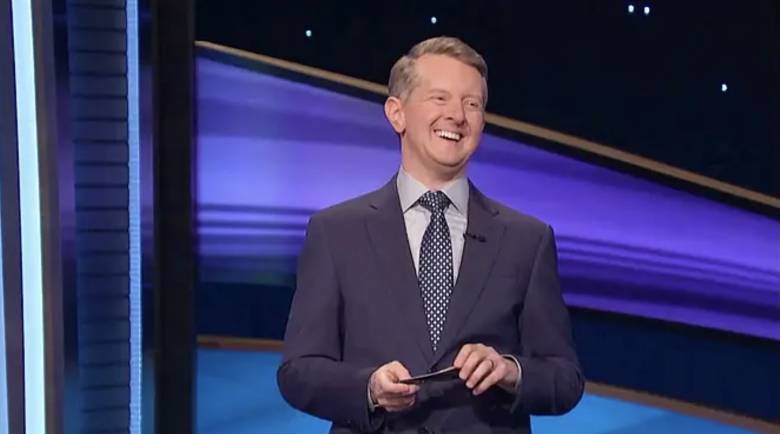The 1970’s produced plenty of hit shows, but few ran as long or were as across-the-board popular as M*A*S*H. This television version of the hit 1970 film by Robert Altman joined the megahit ranks of All In The Family by retooling the sitcom format to include a lot of drama, thus becoming one of the first examples of the “dramedy.” It also used its Korean War setting to make an effective commentary on an issue that America was just beginning to come to terms with, the Vietnam War. The result was a classic show that could make you laugh, make you cry, and make you think, sometimes all at once.
Set during the Korean War, M*A*S*H focused on the 4077th, an American “Mobile Army Surgical Hospital” unit that worked close to the front lines in Korea. The team of doctors, nurses and associated officers concentrated their efforts on saving the lives of soldiers wounded on the front lines, doing their best to heal the young men before their eventual return to battle. As is the case in any wartime operation, the surgeons were often forced to bend military rules to carry out their medical work in a proper and humane fashion.
Working at the 4077th was a tough and often grim job, so certain officers developed a sense of humor to cope with their surroundings. The wittiest doctors were Hawkeye and Trapper John, a pair of gifted surgeons who developed party-hearty demeanors as a mental escape from the rigors of their jobs. This was fine by their commanding officer, the fishing hat-clad Col. Henry Blake, but their irreverent attitudes often got them in trouble with Major Frank Burns, a straight-arrow fellow surgeon who always adhered to the rules. Well, all the rules except one: Burns carried on a secret affair with head nurse “Hotlips” Houlihan. Meanwhile, Radar O’Reilly, the boyish and somewhat clumsy aide to Col. Blake, struggled to keep everything on its feet, and kindly Father Mulcahy provided counsel for both troubled soldiers and stressed-out surgeons.
With this lineup in place, M*A*S*H began to jell as an effective satire of war and its futility. Despite the fact that the show was set during the Korean War, many perceptive viewers noticed that the show’s critique of war applied just as well to the then-ongoing Vietnam War. The show further benefited from sharp writing by series creator Larry Gelbart, a comedy veteran whose resume dated back to classics like Your Show Of Shows.
M*A*S*H also boasted a resolutely great ensemble cast. Alan Alda’s performance as Hawkeye captivated audiences everywhere by offsetting zany, Groucho Marx-style humor with a serious, deeply felt sense of compassion. The role transformed Alda into a television icon of the 1970’s, and his success allowed him to become more creatively involved with the show, even to the point of directing several episodes (including the acclaimed final episode). Larry Linville also won high marks for his performance as the terminally uptight Major Burns, Loretta Swit provided a sassy female presence as Hotlips, and baby-faced Gary Burghoff (the only cast member to reprise his film role) transformed the potentially goofy role of Radar into a likable audience-identification figure.
M.A.S.H. was not an instant success when it first hit the airwaves, but its luck changed when it shifted to a plum Saturday night slot between All In The Family and The Mary Tyler Moore Show. With this new exposure, the show built a strong, dedicated audience with its effective combination of classic comedy and timely antiwar drama. To keep things fresh, the writers began introducing new characters. The first notable addition was Cpl. Maxwell Klinger, an enlisted man determined to get out of the Army through a “Section 8” (mentally unfit duty) by dressing up in women’s clothing. Nobody was fooled by this gesture, though, and he stayed in the cast until the show’s end.
The next major character shift occurred when Col. Blake got himself transferred away from the front lines. In his memorable last episode, “Abyssinia, Harry,” he flew off after several tearful goodbyes only to get shot down by the enemy shortly after leaving. When this episode was filmed, the ending was unannounced to most of the cast so they would give a genuine reaction to Blake’s death when it was announced over the loudspeakers. Blake’s command was taken over by Colonel Potter, an older and stodgier (but just as witty) replacement. Trapper John also left the show around this time, replaced by another O.R. cut-up (pun intended), B.J. Hunnicutt.
Other changes occurred later in the 1970’s. Major Burns went AWOL after his romance with Hotlips ended, but his antagonist’s role was nicely filled by Charles Winchester, a British-accented Bostonian whose aristocratic attitude was often at odds with the primitive ways of the 4077th. Like Burns, Winchester made an excellent straight man for Hawkeye. Radar retired to civilian life in 1979 and replaced as the company clerk by Klinger. By this time, Klinger had stopped wearing dresses, but he remained as irreverent as ever. In 1979, the show also worked in a new regular character with Rosie, a bar owner in a nearby Korean town.
Despite these changes of cast, M*A*S*H remained consistently compelling and entertaining. It also became a regular visitor to the television ratings top-ten. As the show became comfortable with its success, it began to experiment with adding more drama into the show. Silly plots were downplayed in favor of scripts that allowed comedy to add flavor to what had essentially become a drama with very witty dialogue. For instance, “Hawk’s Nightmare” dealt with the stress-induced fatigue common to military personnel, as Hawkeye sought psychological counseling after developing odd behaviors like sleepwalking and recurring nightmares.
The show also began to experiment with its format in interesting ways. One of the early examples was “The Interview,” an episode that consisted of a series of interviews with the cast done by a visiting photojournalist, all based on in-character improvisations by the actors. To add to the realistic period feel, the interviews were shot on black-and-white film and intercut with real newsreel footage. Another memorable experimental episode was “Dreams,” an Alda-directed episode that consisted of a series of dreams that the members of the 4077th had after being deprived of sleep for two straight days. The dreams revealed their inner thoughts and fears, the most memorable being Hawkeye’s nightmarish encounter with a soldier he could not heal.
M*A*S*H’s consistently high ratings allowed it to continue as a prime time favorite throughout the 1970’s. It remained popular into the early 1980’s, but the cast and producers decided to close up shop while it was still a hit. The result was one of the most unforgettable final episodes in television history, a three-hour epic entitled “Goodbye, Farewell, And Amen.” In this episode, Hawkeye tried to work his way through a nervous breakdown as the rest of the 4077th crew prepared for their return to civilian life as the Korean War came to its end.
“Goodbye, Farewell, and Amen” masterfully mixed the tragic (Winchester assembled a group of musically gifted P.O.W.’s into a mini-orchestra, only to see them senselessly killed during a surprise attack) and moving (Klinger found love with a Korean woman and got married) to provide a definitive capper for one of television’s finest achievements. It also became the most-watched television event of its time, surpassing the ratings record set by Dallas’ “Who Shot J.R.?” episode to reel in nearly 125 million viewers.
The season after M*A*S*H ended its run, the show’s producers created a sequel series entitled After M*A*S*H, which followed the civilian adventures of Potter, Klinger and Mulcahy as they worked at a VA Hospital in Missouri. Despite its reunion of key cast and creative members of the M*A*S*H team, the new show only lasted a season.
Meanwhile, the original M*A*S*H has gone on to become one of the most popular syndicated series on television and remains a regularly run favorite around the world. With its blend of high comedy and high drama, this one-of-a-kind series has stayed fresh long after the close of the war (or wars) it depicted, outliving its topical antiwar status to become one of television’s true classics.
production details
USA / CBS – 20th Century Fox Television / 247×25 minute episodes 3×50 minute episodes 1×150 minute episodes / Broadcast 17 September 1972 – 19 September 1983
Creators: Larry Gelbart, Gene Reynolds / Characters: Richard Hoover
cast
ALAN ALDA as Captain ‘Hawkeye’ Pierce
WAYNE ROGERS as Captain John ‘Trapper’ McIntyre (1972-1975)
MIKE FARRELL as Captain B.J. Hunnicutt (1975-1983)
LORETTA SWIT as Major Margaret ‘Hotlips’ Houlinhan
McLEAN STEVENSON as Lt Colonel Henry Blake (1972-1975)
HENRY MORGAN as Colonel Sherman T. Potter (1975-1983)
LARRY LINVILLE as Major Frank Burns (1972-1977)
DONALD OGDEN STIERS as Major Charles Emerson Winchester III (1977-1983)
GARY BURGHOFF as Cpl Walter ‘Radar’ O’Reilly
JAMIE FARR as Cpl Maxwell Klinger
WILLIAM CHRISTOPHER as Fr John Francis Mulcahy












